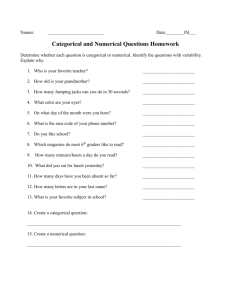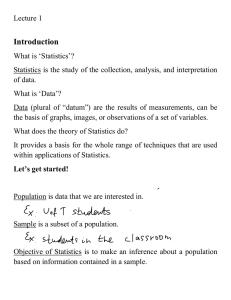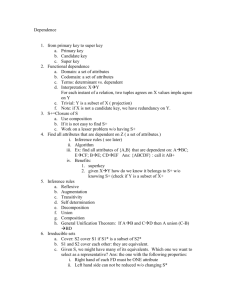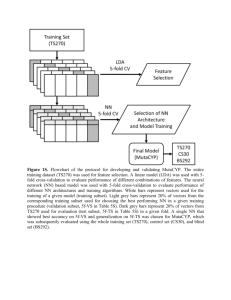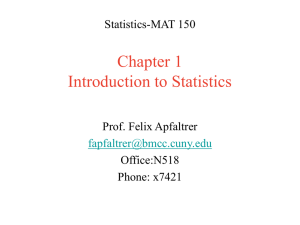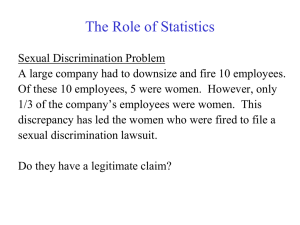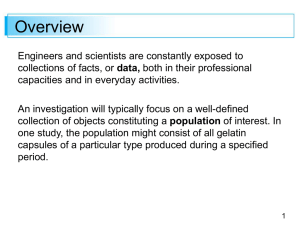Statistics Vocabulary: Key Terms & Definitions
advertisement
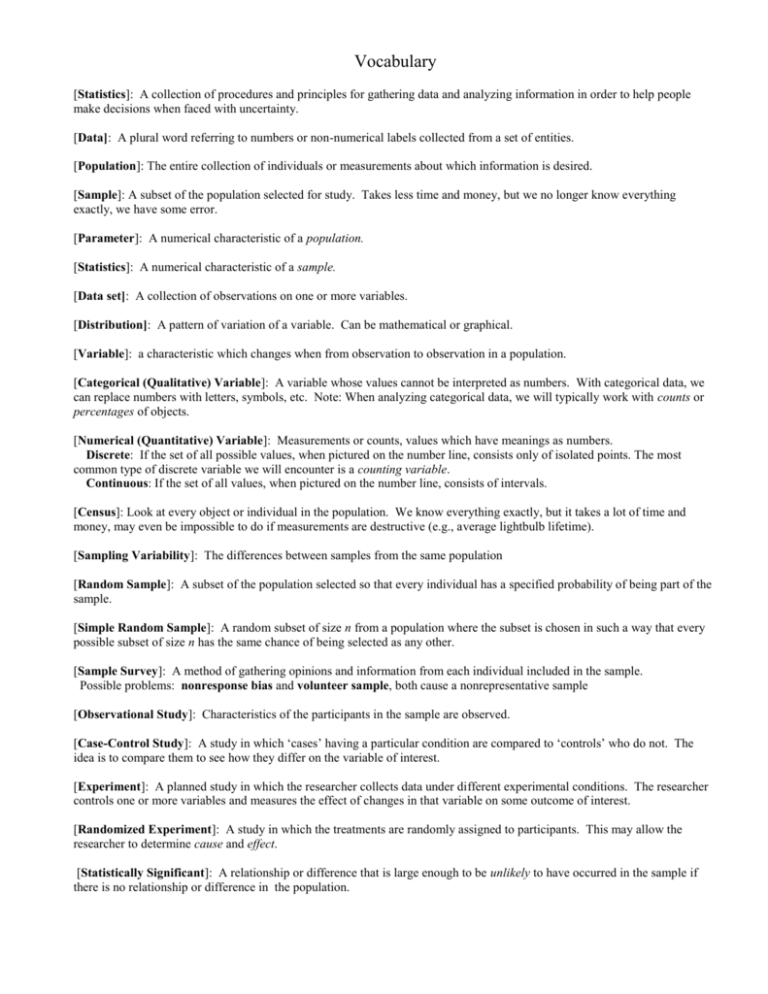
Vocabulary [Statistics]: A collection of procedures and principles for gathering data and analyzing information in order to help people make decisions when faced with uncertainty. [Data]: A plural word referring to numbers or non-numerical labels collected from a set of entities. [Population]: The entire collection of individuals or measurements about which information is desired. [Sample]: A subset of the population selected for study. Takes less time and money, but we no longer know everything exactly, we have some error. [Parameter]: A numerical characteristic of a population. [Statistics]: A numerical characteristic of a sample. [Data set]: A collection of observations on one or more variables. [Distribution]: A pattern of variation of a variable. Can be mathematical or graphical. [Variable]: a characteristic which changes when from observation to observation in a population. [Categorical (Qualitative) Variable]: A variable whose values cannot be interpreted as numbers. With categorical data, we can replace numbers with letters, symbols, etc. Note: When analyzing categorical data, we will typically work with counts or percentages of objects. [Numerical (Quantitative) Variable]: Measurements or counts, values which have meanings as numbers. Discrete: If the set of all possible values, when pictured on the number line, consists only of isolated points. The most common type of discrete variable we will encounter is a counting variable. Continuous: If the set of all values, when pictured on the number line, consists of intervals. [Census]: Look at every object or individual in the population. We know everything exactly, but it takes a lot of time and money, may even be impossible to do if measurements are destructive (e.g., average lightbulb lifetime). [Sampling Variability]: The differences between samples from the same population [Random Sample]: A subset of the population selected so that every individual has a specified probability of being part of the sample. [Simple Random Sample]: A random subset of size n from a population where the subset is chosen in such a way that every possible subset of size n has the same chance of being selected as any other. [Sample Survey]: A method of gathering opinions and information from each individual included in the sample. Possible problems: nonresponse bias and volunteer sample, both cause a nonrepresentative sample [Observational Study]: Characteristics of the participants in the sample are observed. [Case-Control Study]: A study in which ‘cases’ having a particular condition are compared to ‘controls’ who do not. The idea is to compare them to see how they differ on the variable of interest. [Experiment]: A planned study in which the researcher collects data under different experimental conditions. The researcher controls one or more variables and measures the effect of changes in that variable on some outcome of interest. [Randomized Experiment]: A study in which the treatments are randomly assigned to participants. This may allow the researcher to determine cause and effect. [Statistically Significant]: A relationship or difference that is large enough to be unlikely to have occurred in the sample if there is no relationship or difference in the population.
